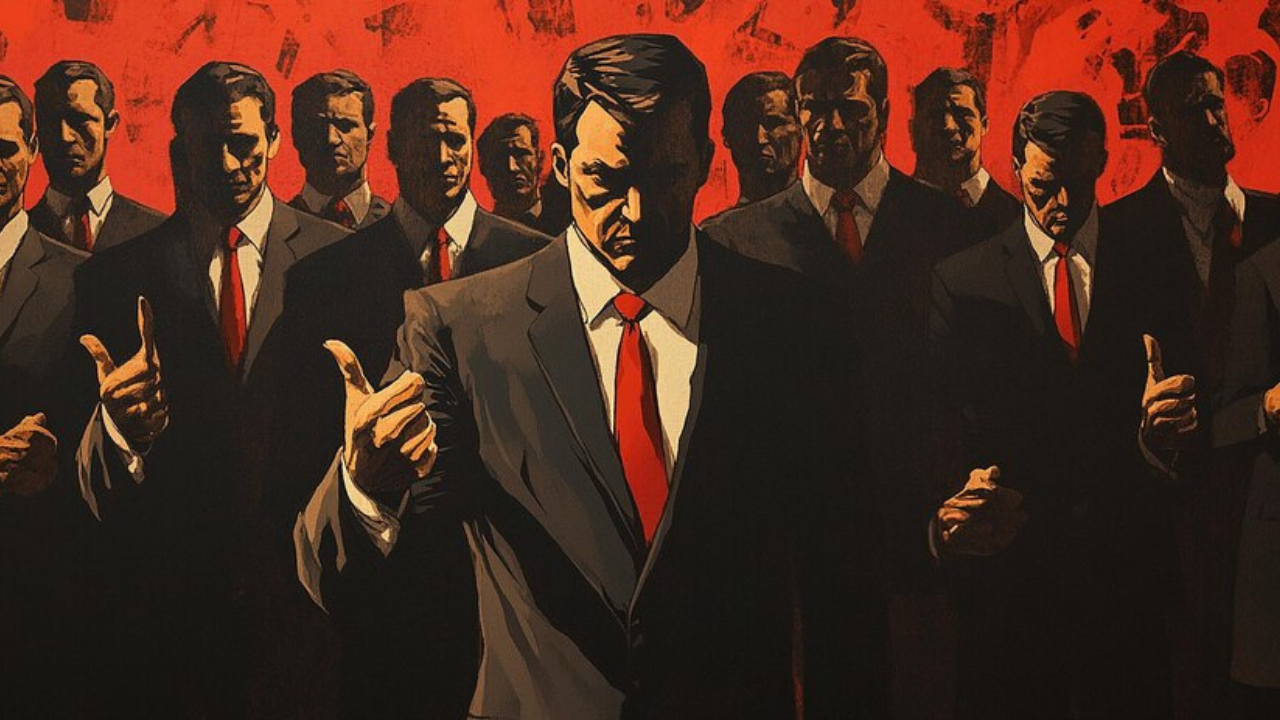Introduction to Fuckerman and its origins as a meme
In the vast landscape of internet culture, few phenomena have captured our collective attention quite like Fuckerman. Born from the depths of memes and social media, this quirky character has transformed from a digital oddity into a cultural icon. With roots steeped in absurdity and irreverence, Fuckerman embodies the spirit of modern humor. What started as a simple joke quickly morphed into something much larger—a reflection of society’s playful defiance against norms. As we dive deeper into its evolution, we’ll explore how this unconventional figure made his way to mainstream recognition and what it says about our changing tastes in comedy and commentary. Buckle up for an entertaining journey through meme history!
The rise of Fuckerman in internet culture
Fuckerman began as a simple meme, yet it quickly captured the attention of internet users everywhere. Its absurdity resonated with many who craved humor that pushed societal norms.
Users shared images and videos across various platforms, transforming Fuckerman from an obscure figure into a viral sensation. Social media played a critical role in spreading its outrageous charm. Memes flooded timelines, featuring Fuckerman in bizarre scenarios that satirized everyday life.
As memes evolved, so did the character’s identity. Artists began creating their interpretations of Fuckerman, each adding layers to its lore. This collaborative nature fueled engagement and ensured its place within digital discourse.
Forums buzzed with discussions about the meaning behind Fuckerman’s antics. Fans debated whether it was merely silly or if there was deeper satire at play. The appeal was undeniable—this character tapped into a collective desire for irreverent laughter amid serious times.
Fuckerman’s impact on popular media and advertising
Fuckerman has seeped into various facets of popular media, transforming the way we view humor. This irreverent character quickly became a talking point across social platforms.
Advertising agencies took notice. Brands began leveraging Fuckerman’s edgy persona to grab attention and break through the clutter. The shock value often translated into higher engagement rates as audiences resonated with the unapologetic nature of the meme.
Television shows and movies followed suit, incorporating Fuckerman-inspired elements to appeal to younger demographics craving authenticity. It’s not just a meme anymore; it’s part of modern storytelling.
Merchandising also exploded in response to this trend. T-shirts, mugs, and stickers featuring Fuckerman’s iconic imagery popped up everywhere. This evolution showcases how a simple internet joke can morph into a cultural phenomenon that captures imaginations while provoking thought on societal norms.
Controversies surrounding the use of Fuckerman in mainstream media
The rise of Fuckerman hasn’t come without its share of controversies. Many argue that the character’s irreverent humor crosses ethical lines, especially in sensitive contexts.
Critics often point to instances where the character has been used in advertising campaigns aimed at younger audiences. They claim it normalizes vulgarity and desensitizes children to inappropriate language.
On the flip side, supporters defend Fuckerman as a symbol of freedom and rebellion against censorship. They believe it challenges societal norms around comedy and allows for open dialogue about taboo subjects.
Yet, this duality creates tension within mainstream media. Some brands have faced backlash for embracing fucker-centric marketing while others revel in its shock value. The debate continues as creators navigate how far they can push boundaries before alienating their audience or compromising values.
The evolution of Fuckerman from meme to merchandise
Fuckerman’s transformation from a simple meme to a full-fledged merchandise phenomenon is nothing short of remarkable. Originally birthed in the depths of internet humor, this quirky character quickly became a symbol for irreverence and satire.
As social media platforms exploded with viral content, Fuckerman surfed the wave, captivating audiences with its outrageous antics. T-shirts featuring bold graphics and cheeky slogans started popping up everywhere, turning it into an icon of rebellion.
From stickers to plush toys, the range expanded rapidly. Each piece of merchandise encapsulates that edgy charm which first drew people in. Fans embraced Fuckerman not just as a meme but as an emblem of playful defiance against societal norms.
Today’s shelves showcase everything from mugs to phone cases adorned with this unique figure. It’s clear that what began as fleeting internet amusement has solidified its place in pop culture history through clever marketing and undeniable appeal.
The future of Fuckerman in pop culture and its lasting legacy
The future of Fuckerman in pop culture is ripe with potential. As society continues to embrace unconventional humor, Fuckerman stands poised to evolve even further.
New generations are discovering this audacious character, breathing fresh life into the meme phenomenon. Platforms like TikTok and Instagram help keep it relevant among younger audiences who thrive on edgy content.
Merchandising opportunities abound as well. Apparel featuring Fuckerman could soon become a staple in streetwear. The blend of humor and iconic imagery attracts both collectors and casual fans alike.
As discussions surrounding censorship and artistic expression grow more heated, Fuckerman serves as a symbol of subversive comedy. Its irreverent nature invites conversations that challenge societal norms.
This unique character has undeniably carved its niche within the fabric of internet culture, ensuring its place for years to come. The legacy will likely inspire new creators eager to push boundaries through satire and wit.
Conclusion:
Fuckerman has made a remarkable journey from the depths of internet memes to becoming a recognizable icon in popular culture. This transformation speaks volumes about how digital content can evolve and influence societal norms. The character resonates with many because it embodies a unique blend of humor and irreverence that challenges traditional comedic boundaries.
Its presence in various forms of media illustrates its adaptability and relevance. Advertisers have utilized Fuckerman’s edgy appeal, tapping into audiences who crave authenticity over polished perfection. Yet this popularity hasn’t come without controversy; debates around appropriateness continue to surround its use in mainstream platforms.
Moreover, as merchandise featuring Fuckerman continues to emerge, fans embrace not just the humor but the statement behind it. It serves as both an emblematic figure for those seeking liberation from conventional joke formats and an opportunity for self-expression.
The future looks bright for Fuckerman in pop culture. As society evolves, so too does our sense of humor—a reflection mirrored by this bold character’s ongoing journey through various cultural landscapes. With each meme shared or product sold, Fuckerman pushes us further toward embracing satire’s potential while inviting conversations about what is considered funny today.
It will be fascinating to observe how Fuckerman continues shaping discourse within comedy and beyond—reminding us all that sometimes laughter comes best draped











